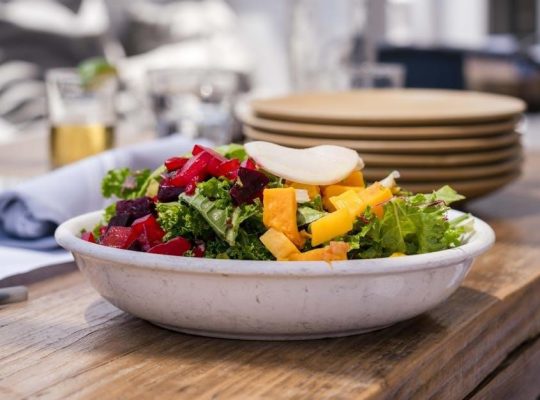Finding Free Leather Keychain PDF Patterns
Numerous online resources offer free downloadable PDF patterns for leather keychains․ Websites, blogs, and YouTube channels provide various designs, from simple to complex, catering to all skill levels․ Explore these options to find your perfect pattern․
Online Resources for Free Patterns
The internet offers a treasure trove of free leather keychain PDF patterns․ Dedicated crafting websites often feature free downloadable patterns, sometimes requiring registration or email subscriptions․ Blogs specializing in leatherwork frequently share free patterns alongside tutorials and project ideas․ YouTube channels focused on DIY and leather crafting often include downloadable PDF patterns within their video descriptions or as links in accompanying blog posts․ These platforms provide a diverse range of styles and complexities, ensuring you find a pattern that matches your skill level and desired aesthetic․ Remember to always check the licensing terms before using any free pattern to confirm permitted uses and attribution requirements․
Pattern Websites and Blogs
Many websites and blogs dedicated to leather crafting offer free PDF patterns for keychains․ These platforms often showcase a variety of designs, from simple and beginner-friendly shapes to more intricate and detailed patterns for experienced crafters․ Some websites specialize in providing free patterns as a way to attract visitors and promote their other products or services, such as leather supplies or online courses․ Blogs written by leather artisans frequently include free patterns as part of their tutorials or project showcases․ These blogs provide a more personal touch, often offering valuable tips and advice alongside the pattern itself․ Be sure to check the site’s terms and conditions before downloading and using any patterns, especially if you plan to sell the finished keychains․
YouTube Tutorials with Downloadable Patterns
YouTube is a treasure trove of leather crafting tutorials, many of which include downloadable PDF patterns for keychains․ Channels dedicated to DIY and leatherwork often share video instructions alongside free patterns, allowing viewers to follow along visually while having access to a printable template․ These tutorials vary greatly in complexity, ranging from basic designs ideal for beginners to more advanced projects suitable for experienced leatherworkers․ The advantage of using YouTube tutorials is the visual learning aspect; seeing the process demonstrated step-by-step can be incredibly helpful, especially for those new to leather crafting․ Remember to carefully review the video description for links to download the pattern and any other relevant materials․
Choosing the Right Pattern
Select a pattern matching your skill level and desired keychain style․ Consider complexity, size, and design elements before downloading and printing your chosen PDF pattern․
Beginner-Friendly Patterns
For those new to leather crafting, simple keychain patterns are ideal starting points․ Look for patterns with minimal pieces and straightforward stitching․ Rectangular or square designs with simple holes for attaching key rings are excellent choices․ Avoid intricate designs with multiple layers or complex shaping techniques until you gain more experience․ Many free online resources offer such patterns, often accompanied by detailed, easy-to-follow instructions and helpful visual guides․ These simplified patterns ensure a successful first project, building confidence and encouraging further exploration of leather crafting․ Remember to choose a pattern with clear diagrams and concise instructions for a smooth learning experience․ Starting with a basic, easy-to-follow pattern helps develop essential skills and techniques, setting a solid foundation for more advanced projects․ The satisfaction of completing a simple project boosts confidence and motivates you to tackle more challenging designs in the future․
Intermediate and Advanced Patterns
Once you’ve mastered basic leatherwork, explore intermediate and advanced keychain patterns․ These often involve more complex shapes, multiple pieces, and intricate stitching techniques․ Consider patterns featuring embossed designs, multiple layers, or decorative elements like braiding or tooling․ You might find patterns for keychains shaped like animals, intricate geometric designs, or those incorporating additional hardware like snaps or buckles․ These designs challenge your skills and allow for greater creativity and personalization․ Online resources offer a wide variety of patterns catering to different skill levels and aesthetic preferences․ Remember to carefully review the pattern’s instructions and difficulty level before starting․ Selecting a pattern that aligns with your current skill set is crucial for a successful and enjoyable crafting experience․ Don’t be afraid to experiment and push your boundaries, but start with patterns slightly beyond your comfort zone to ensure steady progress and skill development․
Patterns for Specific Keychains (e․g․, heart, alien)
Many free PDF patterns cater to specific keychain designs, moving beyond basic shapes․ Find patterns for heart-shaped keychains, perfect for romantic gifts or personal use․ For a whimsical touch, explore alien-themed patterns, adding a fun, quirky element to your accessories․ Beyond these, you can discover patterns for keychains shaped like animals, such as cats, dogs, or even more exotic creatures․ Geometric designs, from simple to intricate, offer another avenue for unique keychains․ Some patterns might incorporate specific cultural or symbolic shapes, allowing you to create truly personalized and meaningful items․ Remember to check the pattern’s complexity before starting․ While some might be straightforward, others might require advanced techniques like tooling or multiple layers․ The availability of these themed patterns allows for a high degree of customization and self-expression in your leather crafting projects․
Downloading and Using the Pattern
After selecting your preferred pattern, download the PDF file․ Ensure proper printing and scaling to maintain accuracy․ Transfer the pattern to your leather carefully before cutting and crafting․
Understanding PDF Pattern Files
Free leather keychain PDF patterns are digital files containing the design’s blueprint․ These files typically include detailed diagrams, measurements, and sometimes instructions․ Before printing, carefully review the file’s contents for any notes on scaling or specific printing settings․ Understanding the file’s format is crucial for accurate pattern transfer․ Some patterns might offer multiple views or variations of the same design․ Pay close attention to the included diagrams, as they might illustrate different stages of the crafting process or depict various components of the keychain․ Ensure you understand the layout and any markings on the pattern itself before proceeding, this will help prevent errors in cutting and assembly․ Many patterns are designed to be printed at 100% scale, but always double-check the instructions to avoid discrepancies in size․ A clear understanding of the PDF file’s contents is essential for a successful project․
Printing and Scaling the Pattern
Accurate printing and scaling are vital for a well-fitting leather keychain․ Before printing your chosen PDF pattern, ensure your printer settings are configured correctly․ Select “Actual Size” or “100%” to avoid unintended scaling․ Many free patterns are designed for this setting, preventing size discrepancies․ Test print a small portion of the pattern first to verify the scale and ensure no distortion occurs․ If the pattern includes a test square with specified dimensions, measure this after printing to verify accuracy․ Adjust printer settings if necessary to achieve the correct size; For patterns that require scaling, use your printer’s scaling options or a dedicated PDF editing program․ Pay close attention to any instructions provided within the PDF concerning scaling and printing․ Improper scaling can lead to an incorrectly sized keychain, necessitating adjustments or restarting the process․ Accurate scaling is crucial for a successful outcome․
Transferring the Pattern to Leather
Several methods exist for transferring your printed pattern onto the leather․ A simple approach involves using tracing paper․ Place the tracing paper over the printed pattern and carefully trace the design․ Then, position the tracing paper onto your leather and trace again, applying firm, even pressure․ Alternatively, use tailor’s chalk or a fabric marker to directly trace the pattern onto the leather․ For intricate patterns, consider using a prick punch or awl to transfer the design․ Carefully prick tiny holes along the pattern lines on the paper; then, position the paper on the leather and tap gently with a hammer or mallet along the holes, transferring the pattern to the leather․ Ensure the leather is placed on a firm, stable surface to prevent slippage․ For dark leather, use a light-colored marking tool; for light leather, use a dark one․ Regardless of your chosen method, ensure the pattern is accurately transferred before cutting the leather to prevent errors and wasted material․
Materials and Tools
Select suitable leather, considering thickness and desired texture․ Gather essential tools⁚ sharp scissors or rotary cutter, leather needles, strong thread, and appropriate hardware like key rings or split rings․
Leather Types Suitable for Keychains
The choice of leather significantly impacts the final look and durability of your keychain․ Full-grain leather, prized for its strength and natural markings, offers a luxurious feel and ages beautifully, developing a rich patina over time․ Top-grain leather, a more affordable option, still provides decent durability, though it may lack the unique character of full-grain․ For beginners, softer leathers like suede or nubuck can be easier to work with, offering a different aesthetic․ Consider the project’s complexity; intricate designs may benefit from thinner, more pliable leathers, while simpler keychains can tolerate thicker, more robust hides․ The leather’s thickness will also influence your choice of stitching techniques and tools․ Ultimately, the best leather type depends on your personal preference, skill level, and the desired outcome for your handcrafted keychain․
Necessary Tools for Leather Crafting
Creating a leather keychain requires specific tools for precise cutting and stitching․ A sharp rotary cutter or craft knife ensures clean cuts, following the pattern accurately․ Leather punches create consistent holes for stitching, crucial for a professional finish․ Stitching requires either a stitching pony (a clamp to hold your work steady) or strong hands and a good grip․ Choose between stitching needles appropriate for your leather thickness, along with strong waxed thread designed for leatherwork․ A ruler and marking tools are essential for accurate measurements and pattern transfer․ Depending on the design, you might also need specialized tools like mallets for setting rivets or snaps, or edge bevelers for finishing the leather edges smoothly․ Remember safety; always use a cutting mat to protect your work surface and wear appropriate eye protection when using sharp tools․
Optional Embellishments and Finishes
Once your leather keychain is crafted, consider adding embellishments to personalize it․ Metal studs, conchos, or decorative rivets can add a touch of flair․ Consider stamping or embossing designs onto the leather for a unique look․ Adding a decorative stitch, beyond the functional stitching, can enhance the aesthetic appeal․ Leather dyes or paints allow you to customize the color of your keychain․ For a protective finish, apply a leather sealant or conditioner to prevent scratches and maintain its look․ If using metallic embellishments, ensure they are securely attached to avoid loss․ Experiment with different combinations to create a one-of-a-kind keychain reflecting your style․ Remember that less is often more; subtle embellishments can be more effective than an overabundance of decoration․
Crafting Your Keychain
This section details the process of assembling your leather keychain using your chosen pattern․ Precise cutting, careful stitching, and secure hardware attachment are key for a durable and stylish result․
Cutting and Shaping the Leather
Accurately cutting the leather according to your chosen PDF pattern is crucial for a well-fitting keychain․ Use sharp shears or a rotary cutter for clean cuts․ Pay close attention to the pattern’s markings, ensuring precise alignment for symmetrical shapes․ For intricate designs, consider using a craft knife for greater control and detail․ If your pattern includes multiple pieces, carefully number or label them to avoid confusion during assembly․ Remember to account for seam allowances when cutting, as specified in the pattern instructions․ After cutting, carefully smooth any rough edges using a leather edge beveler or sanding tool for a professional finish․ Proper shaping before stitching ensures a smooth, polished final product, enhancing both its appearance and durability․
Stitching Techniques for Leather
Several stitching methods can be employed when crafting a leather keychain, each offering a unique aesthetic․ The saddle stitch, a classic and durable technique, involves using two needles and a single thread, creating a strong, decorative seam․ This method is ideal for keychains requiring robust construction․ Alternatively, a blind stitch provides a clean, almost invisible finish, perfect for subtle designs․ For a more rustic look, consider a decorative stitch, adding a personal touch to your keychain․ Before stitching, pre-punch holes using a stitching groover or awl for consistent spacing and to prevent the leather from tearing․ Choose a strong, waxed thread appropriate for leatherwork to ensure the longevity of your creation․ Practice your chosen stitch on scrap leather before working on your keychain to ensure a neat and even finish․
Adding Hardware and Finishing Touches
Once your leather keychain is stitched, it’s time to add the finishing touches and hardware․ Select sturdy key rings appropriate for the thickness of your leather; consider using split rings for easier attachment․ If your design incorporates additional elements like a snap closure or decorative rivets, carefully install them using the correct tools․ Apply a leather conditioner to nourish the leather and enhance its suppleness, ensuring a long-lasting, beautiful keychain․ Consider adding a sealant to protect the leather from moisture and wear․ A final polish can enhance the shine and give your keychain a professional finish․ Remember to check all hardware connections are secure before presenting your finished piece․ Adding a small, decorative tag or stamping can personalize your keychain even further․ With attention to detail, your handmade leather keychain will be both functional and visually appealing․


